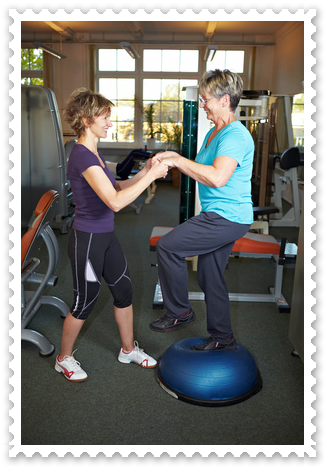 Falling is a common problem amongst the elderly, and it can result in serious injury. It is estimated that one in every three adults aged 65 and older suffer from a fall every year. Fall related injuries range from hip fractures to head trauma. After a fall, patients experience a significant loss of confidence and a fear of falling when walking unaided. Recovery from a fall involves physical as well as psychological elements. It is important for the patient to seek physical therapy for treatment and fall prevention.
Falling is a common problem amongst the elderly, and it can result in serious injury. It is estimated that one in every three adults aged 65 and older suffer from a fall every year. Fall related injuries range from hip fractures to head trauma. After a fall, patients experience a significant loss of confidence and a fear of falling when walking unaided. Recovery from a fall involves physical as well as psychological elements. It is important for the patient to seek physical therapy for treatment and fall prevention.
Why do elderly patients fall?
Visual problems, muscle weakness and low blood pressure can cause a loss of balance, which leads to a fall. Other reasons include conditions such as Parkinson's disease and other conditions that affect the nerves.
Occasionally, middle ear problems (vestibular problems) can occur and balance can be affected. The good news is, falls can be largely prevented with the right precautions.
 A physical therapist is trained to help individuals improve balance between muscle groups and increase joint stability. The physical therapist will begin with a detailed neuromuscular assessment to identify muscle imbalances and integrity of the nervous system.
A physical therapist is trained to help individuals improve balance between muscle groups and increase joint stability. The physical therapist will begin with a detailed neuromuscular assessment to identify muscle imbalances and integrity of the nervous system.
The physical therapist will conduct different tests to determine your sense of balance as you sit, stand and walk. The speed and the stability with which you walk are also evaluated. This becomes the foundation for a balance program, in which you can use your own bodyweight as a source of resistance.
Balance exercises such as single-leg standing under the supervision of a physical therapist are beneficial. Different activities to improve balance while walking and changing positions and direction train the body to prevent falls. The objective is to be able to handle different tasks at the same time while staying in an upright position.
 Physical therapy is an important aspect of fall treatment and prevention. For starters, a physical therapist will assess your footwear and the safety of your home to eliminate factors that could result in an inadvertent fall.
Physical therapy is an important aspect of fall treatment and prevention. For starters, a physical therapist will assess your footwear and the safety of your home to eliminate factors that could result in an inadvertent fall.
Your therapist will use several techniques including core stabilization exercises and manual therapy to improve balance and stability. Your bodyweight is an excellent source of resistance for your muscles. The therapist will challenge your sense of balance in a controlled environment by shifting your center of gravity. This activates important muscle groups in the neck, trunk, abdomen and hip muscles.
As the body adapts to these exercises over a period of time, the risk for falls reduces. The therapist will also provide you with a simple exercise program that you can do at home, without the need for any equipment or devices.